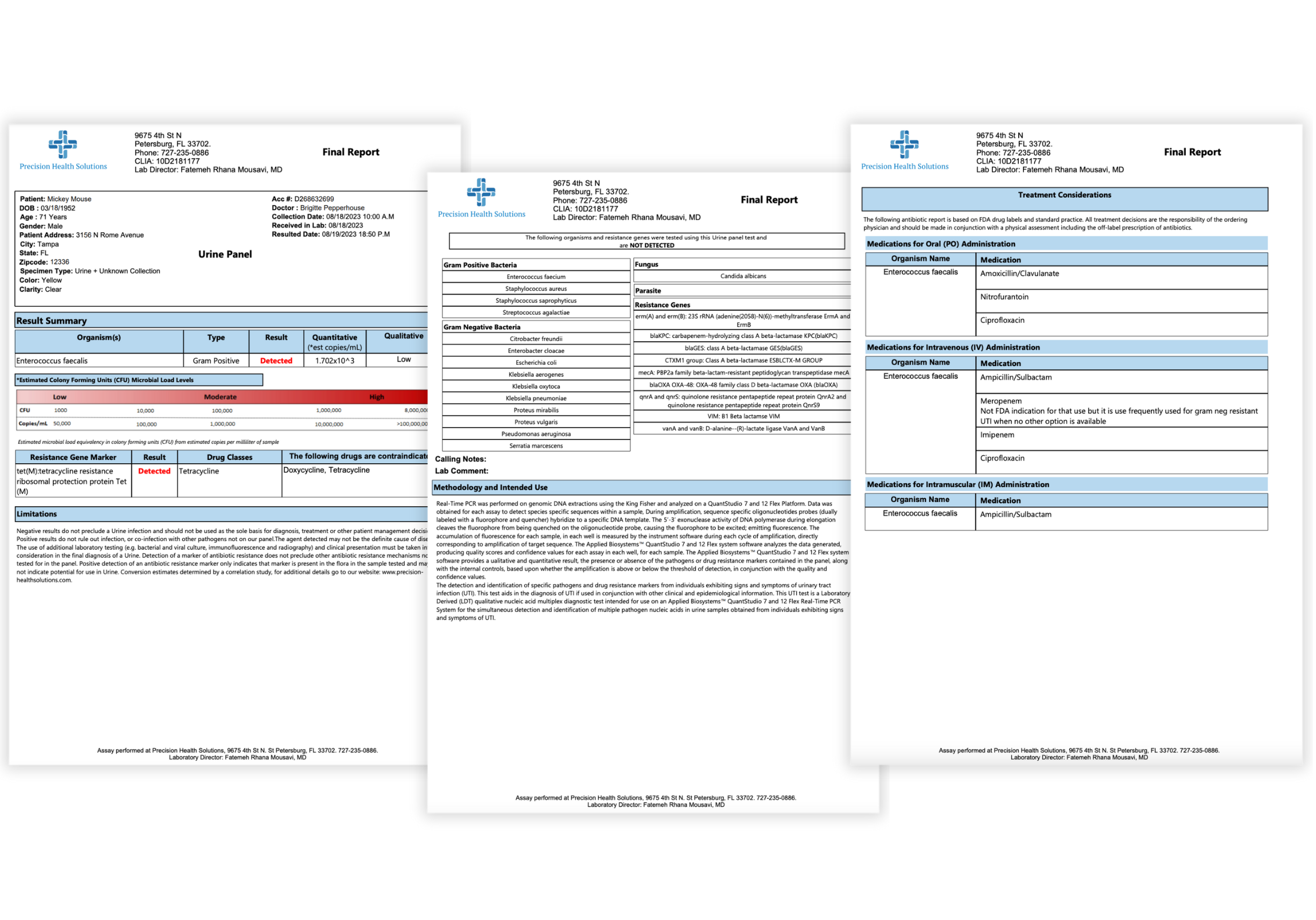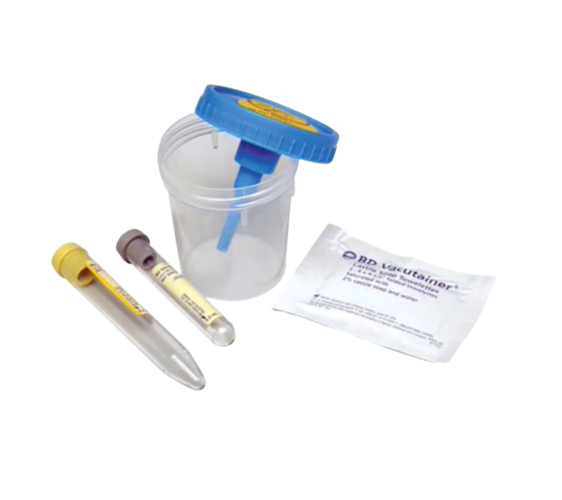National Library of Medicine
Multiplex PCR Based UTI Compared to Traditional Culture
National Library of Medicine
Our PCR UTI Panel
Our PCR UTI test is designed to accurately detect urinary tract infections (UTIs) with unparalleled precision. Utilizing the highly sensitive polymerase chain reaction (PCR) technique, our test amplifies and analyzes genetic material from patient urine samples, enabling the timely identification of the causative pathogens responsible for UTIs. Our UTI test ensures comprehensive and reliable results, facilitating targeted and effective treatment decisions to promote improved patient outcomes.
Learn more about our Real-Time PCR technology
Diagnostic Features
Testing is performed using quantitative Real-Time PCR Technology with a high sensitivity and specificity.
Industry leading turn-around times to aid in treatment decisions – results within 24-48 hours, upon arrival to our lab.
Detects co-infections that may require different treatment options.
Provides comprehensive drug resistance markers.
Real-time portal access for ordering tests and viewing in-progress and final results.
7 days per week concierge service – we come to you!

Comprehensive Lab Results
Our comprehensive results can be found when you log into your client portal.
- Easy to Interpret
- Easy to Access
- Easy to Decipher
- Easy to Download

Specimen Collection
Download our simple specimen collection instructions to view the instructions in either English and Spanish. If you have questions on the collection process, contact us today.

Panel Targets
Antibiotic Resistance Markers
